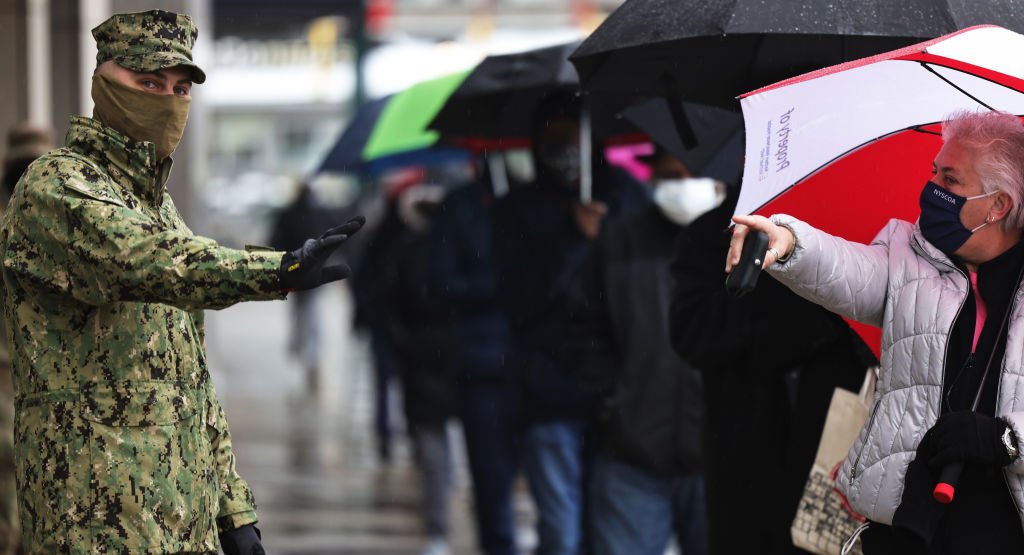Two neighborhoods in New York City, East Harlem and the South Bronx, were among the hardest hit during the pandemic and are now the focus of a new center for post-COVID care and research.
Mount Sinai has opened the new Mount Sinai-Internal Medicine Associates center on its Upper East Side campus to research what is commonly referred to as “long COVID” and provide targeted care for residents of the South Bronx and East Harlem, two neighborhoods that faced the highest hospitalization and death rates, according to a New York State Comptroller report.
The center, Mount Sinai-Internal Medicine Associates at 17 E. 102nd St., is funded by a $5 million federal grant from the Agency for Healthcare Research and Quality, Mount Sinai said in a statement. The grant also supports outreach aimed at improving access to care and awareness of care options to residents of Harlem and the South Bronx.
The initiative comes as COVID rates spiked across New York City this summer, according to data from the Department of Health and Mental Hygiene. Black and Latino New Yorkers experience higher rates of COVID, as well as more symptoms and health problems afterward. However, they are less likely to be diagnosed with long COVID, according to National Institutes of Health studies.
Here’s more on what you need to know about the new center, which opened July 30, based partly on written replies provided by Dr. Alex Federman, professor of medicine at the Icahn School of Medicine at Mount Sinai and one of the project’s leaders.
What is long COVID?
Long COVID is best summarized as a range of symptoms that persist after a COVID infection and can affect people differently, according to the Centers for Disease Control and Prevention. Nationwide, according to the CDC, the most at risk groups are women and Hispanic and Latino people facing “health inequities” from disability, economic, geographic, and other social factors. The most common symptoms of long COVID are fatigue, brain fog, and extreme flu-like symptoms, but the CDC has identified more than 200 long COVID symptoms. Typically, for long COVID, symptoms improve after three months; however, for some, improvement can range from days to years, officials said.
What’s unique about the new offering?
The new center has unique features meant to ease the burdens of long COVID care. One such feature is its location in Mount Sinai’s primary care facility; this is where patients are likely to first report long COVID symptoms, Federman said.
This allows coordination between long COVID specialists, primary care doctors, and other medical resources, which reduces the time between evaluating a patient and caring for them, he said. The center also offers a “navigator” to help patients with “brain fog” from long covid manage their appointments.
What’s the focus of the long COVID research?
While understanding of COVID and how to treat it has progressed, long COVID and how to treat it remains a mystery, Federman said. The research is focused on understanding the needs of patients with long COVID as well as how to provide care tailored for Black and Hispanic communities that have been overlooked during the pandemic, he said.
“As the idea of long COVID began to emerge, individuals from underserved minority communities were largely underrepresented in long COVID research,” Federman said. “There is still a great need for equitable trials and services to address the specific needs and experiences of individuals from underserved minority communities with long COVID.”
What is known, he said, is that disparities in health care in underserved communities have led to higher rates of infection and hospital admissions. These disparities may contribute to a higher prevalence of long COVID and variations in symptoms among different racial and ethnic groups.
Why this location?
On top of being located with a primary care center, the new location was chosen for its proximity to East Harlem and the South Bronx, two communities hit the hardest by the pandemic. The conditions in these communities that increase the risk of infection are rooted in socioeconomic, geographic, and systemic factors, according to the Department of Health. Historical neglect and a lack of health care resources has led to chronic health inequities that may increase the severity of COVID symptoms, Federman said.
The goal is to lessen the disparity of underserved communities, said Dr. Zijian Chen, director of Mount Sinai’s Center for Post-COVID Care. “We encourage those experiencing symptoms after COVID-19, including high-risk minority groups, to seek out care as we try to close a disparity gap.” Chen said.
Has the migrant crisis increased the need?
Federman says the migrant crisis has added to the challenge. More than 200,000 migrants have come to New York since spring 2022, with different health profiles and potential preexisting conditions that could worsen the effects of long COVID, Federman said. Cramped shelters and living arrangements make it easier for COVID to spread while having less resources available. They face the same hardships that other New Yorkers in these communities face but with more barriers to healthcare such as language, financial stability, and legal status, he said.
What’s next?
In the long term, one goal is to destigmatize long COVID and acknowledge the suffering that patients experience, Federman said. He says many patients shared their stories about how doctors dismissed their complaints, which led to distrust and avoidance of healthcare. He expects the volume of patients to increase in the coming months as community outreach builds trust and educates people on long COVID.
